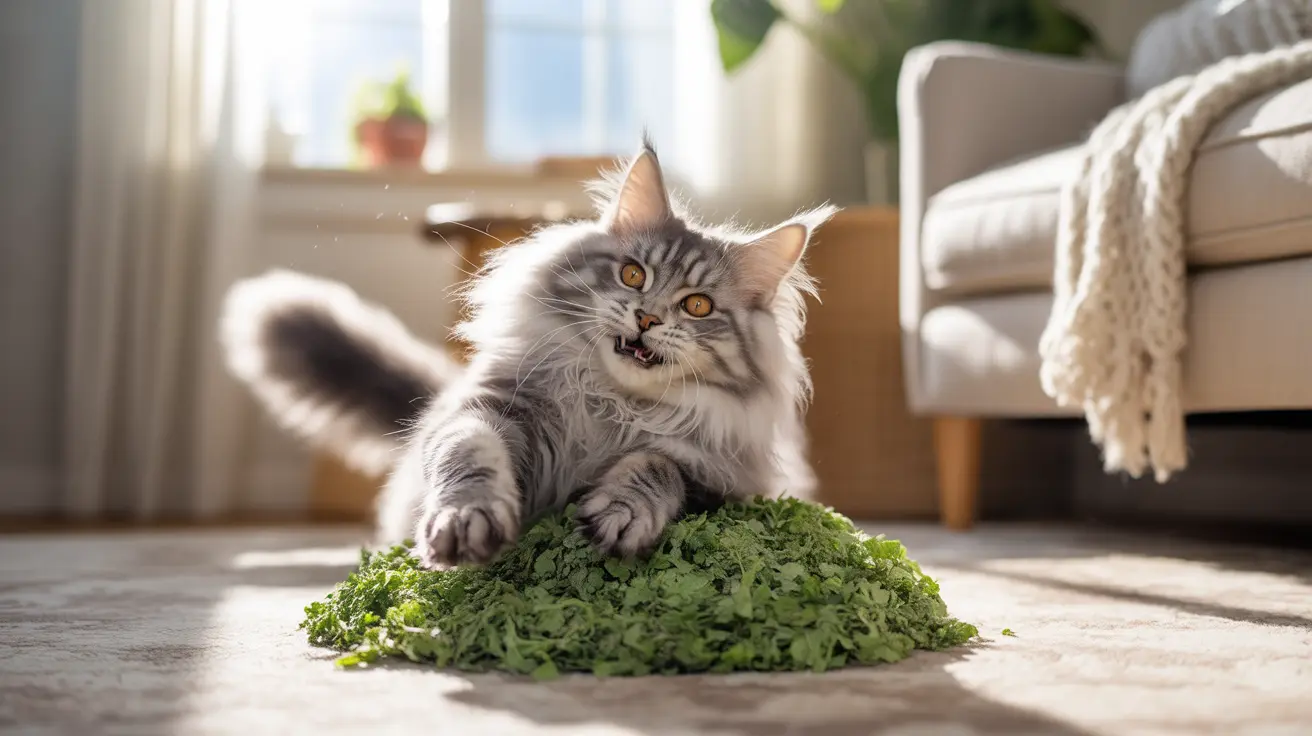Understanding Catnip and Its Effects
Catnip works through a fascinating interaction with your cat's olfactory system. When cats smell nepetalactone, it binds to receptors in their nasal tissue, triggering a cascade of responses in the brain, particularly in areas controlling emotion and behavior.
The response to catnip is actually inherited genetically, with approximately 50-75% of cats showing sensitivity to its effects. Cats typically begin showing reactions between 3-6 months of age, while very young kittens and some senior cats may not respond at all.
The Truth About Catnip "Addiction"
Despite concerns about addiction, scientific research consistently shows that cats cannot become addicted to catnip. Unlike true addictive substances, catnip doesn't create physical or psychological dependence. Cats don't experience withdrawal symptoms or develop compulsive seeking behaviors.
What can occur is habituation - where frequent exposure may lead to decreased sensitivity over time. This is not addiction but rather a natural response where the cat simply becomes less reactive to the stimulus.
Common Behavioral Responses
When exposed to catnip, sensitive cats may display various behaviors:
- Rolling and rubbing against surfaces
- Increased playfulness and energy
- Purring and vocalization
- Relaxation or zoning out
- Temporary euphoric state
These effects typically last between 5-15 minutes, after which cats enter a refractory period of about an hour before they can respond again.
Safety and Best Practices
While catnip is non-toxic and safe for cats, moderation is key. Excessive consumption may lead to mild digestive upset or temporary overexcitement. Veterinarians recommend offering catnip no more than once every few weeks to maintain its effectiveness and prevent any potential stomach issues.
For optimal use:
- Monitor your cat's initial reaction to catnip
- Provide it in a controlled environment
- Store catnip in an airtight container
- Use fresh catnip for the best results
Frequently Asked Questions
Can cats become addicted to catnip or show withdrawal symptoms?
No, cats cannot become addicted to catnip and do not experience withdrawal symptoms. The herb creates a temporary reaction but doesn't cause physical or psychological dependence.
How often is it safe to give my cat catnip without causing negative effects?
It's safe to offer catnip once every few weeks. More frequent use may lead to decreased sensitivity but not harmful effects. Some cats may experience mild stomach upset if they consume too much.
Why do some cats not react to catnip at all?
The response to catnip is genetic, and approximately 25-50% of cats lack the gene that makes them sensitive to it. Age also plays a role, as cats under 3 months typically don't respond.
What behaviors should I expect to see when my cat smells or eats catnip?
Common behaviors include rolling, rubbing, increased playfulness, purring, and sometimes zoning out or appearing euphoric. These effects usually last 5-15 minutes.
Can too much catnip make my cat sick or cause aggression?
While rare, excessive catnip consumption can cause mild stomach upset or temporary overexcitement. Some cats may show mild aggression when overstimulated, but serious adverse reactions are uncommon.
Conclusion
The evidence is clear: while catnip can provide enjoyable enrichment for cats, it does not cause addiction. Understanding this can help cat owners feel confident about using catnip as part of their pet's enrichment routine, knowing they're providing a safe and natural way to enhance their cat's environment.
Remember to observe your cat's individual response and use catnip in moderation to maintain its effectiveness as a fun and engaging treat for your feline friend.






